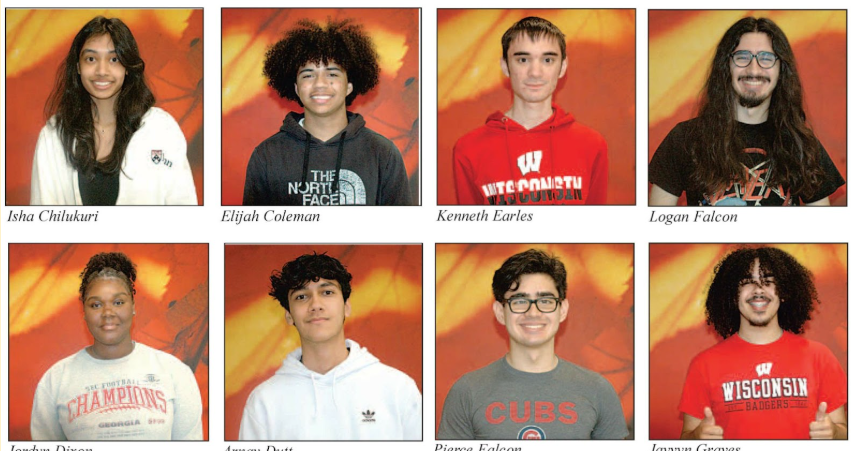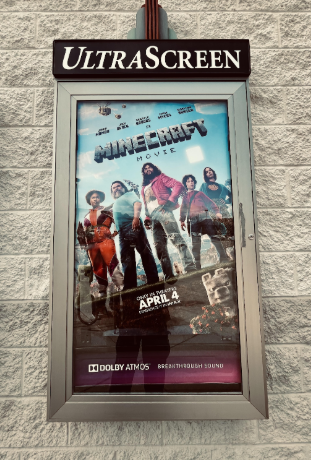The Ice Bucket Challenge made its first appearance over ten years ago, sweeping across social media and catching the attention of everyone from preschoolers to presidents.
The goal of the 2014 trend was to increase donations for amyotrophic lateral sclerosis (ALS), a chronic neurodegenerative disease that can lead to muscle paralysis and permanent physical disability. Participants had a friend drench them in ice water and posted the resulting video online, challenging others to either endure the same or donate to ALS research within 24 hours. This viral phenomenon raised $220 million and significantly advanced ALS treatment.
Now, the Ice Bucket Challenge has resurfaced, this time with a different cause: mental health. University of South Carolina student Wade Jefferson started the challenge by spreading it around campus as part of the Mental Illness Needs Discussion (MIND) club, which he had founded. Similar to the original movement, people post themselves undergoing the bucket dump with the hashtag #SpeakYourMIND and nominate two to five friends who must do the same.
On a surface level, the revamp seems like a positive way to promote mental health awareness. If you open Instagram Stories, you’ll find countless Ice Bucket videos, particularly from high school and college students. People laugh with dripping hair, dare their friends and share MIND’s Instagram profile.
I was eager to participate and hold no judgment toward anyone who did, because it was fun to step out of my comfort zone with friends and be part of a shared experience. Many teenagers like me enjoy reminders of our free will through harmless, adventurous activities.
This excitement toward the dare-like factor makes #SpeakYourMIND as a whole seem more successful than it really is. Getting soaked with cold water may be entertaining, but the mission MIND connects it to is ambiguous and ineffective.
MIND’s focus is to break social stigma surrounding mental struggles and change the way people talk about it. Creating an unrelated trend intended to “raise awareness” is not an effective strategy in a society that already romanticizes mental illness.
The Ice Bucket Challenge trivializes its goal, making it appear as simple as a cold shower. We need to spark conversation about mental health in environments that need it, not in clips of teenagers reciting a basic promotion script that glosses over or even doesn’t mention the issue.
Donating to Active Minds, a nonprofit that prioritizes young adults’ mental health, was an aspect of the challenge, and as a result the organization has received over $300,000. However, because donations weren’t at the forefront of the trend, the call to action often got lost in the chains of nominations. Many people passed on the challenge without contributing to the purpose because nobody told them to pair the ice bucket with financial action.
In contrast, direct support was an integral part of the 2014 challenge: nominees donated $10 by default or could give $100 to escape the icy shower, and research funds skyrocketed. Although ALS itself, also known as Lou Gehrig’s Disease, was not connected to ice water, the original trend’s novelty created an association between the two. Raising awareness was productive in this case because many people were uneducated about ALS, and the new information inspired them to support its research programs.
MIND’s version doesn’t have these parameters that prompt participants to take specific action. When an activity only aims to spread awareness and has little connection to the issue it supports, the message doesn’t translate and soon, students are pouring ice on their heads simply because it’s fun.
Most people have heard about openness toward mental health already, so a fundraiser with the same message and a more viral medium might boost financial gains, but it will not change the societal mindset in ways that matter. MIND’s mission to transform the public image of mental health comes across more as an empty promise.
In fact, MIND’s social goal didn’t just fail: it backfired. Rather than encouraging people to practice mindfulness in everyday life as the club intended, the Ice Bucket Challenge resulted in teenagers downloading Instagram or using the app more frequently.
For me, the challenge ended a months-long streak of refraining from social media. As soon as I reinstalled Instagram, I was met with a flood of ice bucket videos from many of my classmates.
It seems ironic that a mental health movement immediately brought that signature social-media comparison: the first thing I saw was everyone who had already done the challenge and hadn’t chosen me to nominate. I still participated, and I recognize that its silliness made it worthwhile as a shared experience, but the initial disappointment that I felt made me consider how this digital chain letter affects teens who often feel left out.
This is why MIND’s Ice Bucket Challenge, as lighthearted as it may appear, fails to forward the very same cause it claims to support. Mental illness can disguise itself in many ways, and although some participants surely felt more recognized afterward, the majority of people who qualify for the challenge have a support system of people who already prioritize them enough to nominate them. Any teen dealing with isolation—or even just without friends active on social media—can only watch as most of their school spreads the love among one another.
Because of its deceiving success, many reports on the challenge have glorified its impact on teens’ mental health.
Scary Mommy, a popular online platform about motherhood, stated that “anything that will get our teens talking to each other – and listening to each other – about mental health struggles is a definite win.”
It’s easy to think, especially as an adult, that the challenge has a positive impact on teens because all we see is those who participate. Teens who need support but go unnoticed fly under the radar more than ever when this challenge builds the illusion of a happy and healthy generation from cheerful ten-second videos.
It is clear that MIND is well-intentioned. According to their Instagram profile, the Ice Bucket Challenge’s goal is to “build a supportive community where everyone feels comfortable speaking openly about mental health.”
However, the challenge allows only nominated people into the so-called “open” discussion: you can’t “speak your mind” until a friend gives you permission. Otherwise, there is no way to partake in the movement. How will we make progress by giving a voice to all except those who struggle in silence?
We can’t solve mental illness with another popularity contest in disguise. We can’t claim to create conversations for everyone and exclude the people we aim to encourage. We can’t make a real difference in our communities by mindlessly dumping ice water on our heads.
Let’s truly change the way we perceive mental health. If you participated in the #SpeakYourMIND Ice Bucket Challenge, I nominate you to back up your Instagram promise with patience and support for the people in your life.
The views and opinions expressed in this article are those of the author(s) and do not necessarily reflect the official policy or position of The Cardinal Chronicle. Any content provided by our journalists is of their opinion and is not intended to malign any religion, ethnic group, club, organization, company, individual or anyone or anything.









